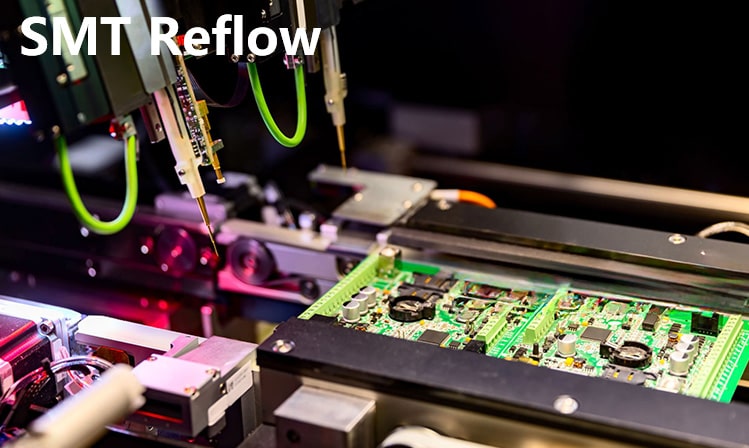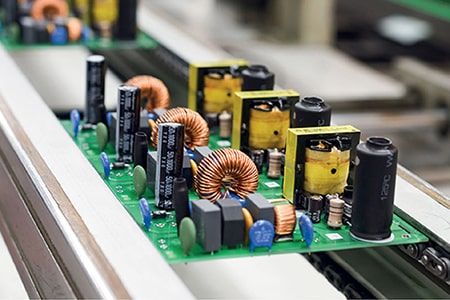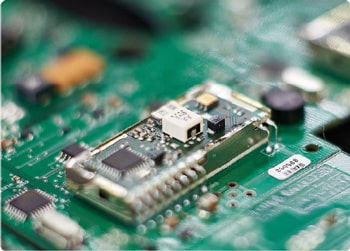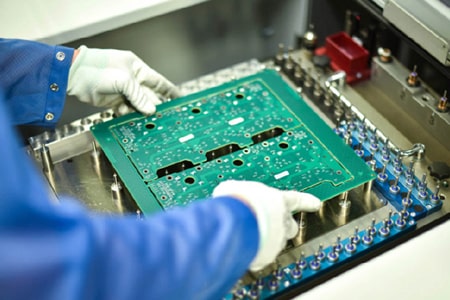What is SMT patch processing reflow soldering
Reflow soldering is a surface mounting technology that uses high temperature for a short time to act on the connection parts of electronic components and printed circuit boards coated with solder paste to achieve soldering. Its working principle is to melt the solder paste and form a reliable solder joint with the soldering area by precisely controlling the temperature and time. This process not only ensures the quality of soldering, but also minimizes the thermal shock to electronic components.
Reflow soldering process
The process of reflow soldering usually includes key steps such as pre-coating solder paste, patch, reflow soldering and cooling. Each step is crucial and directly affects the final soldering quality.

1. Pre-coating solder paste
Before patching, a layer of solder paste needs to be pre-coated on the pad of the PCB (printed circuit board). Solder paste is mainly composed of solder powder, flux and adhesive. Its function is to provide the necessary wettability and fluidity during the soldering process to ensure the quality of the solder joints. When pre-coating solder paste, the thickness and uniformity of the solder paste need to be strictly controlled to avoid soldering defects.
2. SMD
SMD is the process of placing surface mount components (SMD) precisely at the specified position of the PCB. This step requires the use of high-precision SMD equipment to ensure that the position of the components is accurate and the angle is correct. After the SMD is completed, the quality of the SMD needs to be checked to ensure that there are no omissions and no offsets.
3. Reflow soldering
Reflow soldering is the core step of the reflow soldering process. The process is usually divided into four parts: preheating zone, heat absorption zone, reflow zone and cooling zone.
Preheating zone: The purpose of this stage is to gradually heat the PCB and SMD components from room temperature to the temperature at which the solder paste begins to melt. By slowly heating up, the thermal shock caused by rapid temperature changes to components can be reduced, ensuring the reliability of welding. The temperature and time settings of the preheating zone need to be adjusted according to the specific solder paste and component characteristics.
Heat absorption zone: In the heat absorption zone, the PCB and solder paste continue to heat up, and the solder paste begins to melt and wet the soldering area. This stage needs to maintain a certain temperature and time to ensure that the solder paste is fully melted and evenly covers the pads and component pins to form a good wetting effect.
Reflow zone: The reflow zone is a key area in the welding process. The temperature rises rapidly to above the melting point of the solder paste, so that the solder paste is completely melted and forms a liquid phase welding zone with the pad and component pins. The temperature and time control at this stage are extremely important. Too high temperature and too long time may cause damage to components or deformation of the PCB, while too low temperature and too short time may cause poor welding.
Cooling zone: After the reflow zone, the PCB enters the cooling zone for rapid cooling. The cooling process needs to be properly controlled to ensure that the solder joints solidify quickly and enhance the reliability of welding. The cooling rate has a direct impact on the strength and appearance of the solder joints. Too fast cooling may cause stress inside the solder joints, affecting the welding quality.
4. Cooling and inspection
After cooling is completed, the welding process is basically over. At this time, the welding quality needs to be inspected, including the appearance, strength, connection reliability, etc. of the solder joints. Common inspection methods include visual inspection, X-ray inspection, tensile testing, etc. For unqualified solder joints, repair or re-welding is required.
Advantages and Challenges of Reflow Oven
Advantages:
1. High Efficiency: Reflow Oven can simultaneously solder multiple pins, greatly improving production efficiency.
2. High Quality: By precisely controlling temperature and time, reflow oven can form high-quality solder joints and reduce soldering defects.
3. High degree of automation: Modern reflow oven equipment is highly automated, reducing the impact of human factors on soldering quality.
Challenges:1. Temperature and Time Control: The control of soldering temperature and time is very critical and requires precise adjustment to avoid poor soldering or component damage.
2. Special Component Handling: For some components with high temperature sensitivity, the temperature and time of reflow oven need to be controlled more carefully.
3. Equipment Selection and Maintenance: Select appropriate reflow oven equipment and perform regular maintenance to ensure the stability and consistency of soldering.
Cleaning and Maintenance after Reflow Oven
After reflow oven, materials such as flux in solder paste will leave residues on the PCB. These residues may have a negative impact on the performance of the circuit board, so cleaning is required. Cleaning usually uses ultrasonic cleaning, furnace cleaner or anhydrous alcohol to ensure the purity of the circuit board surface.
In addition, regular maintenance of reflow equipment is also an important measure to ensure welding quality. Including cleaning the inside of the furnace, checking the heating elements, calibrating the temperature control system, etc., to ensure the normal operation of the equipment and the stability of welding quality.
If you want to know more, you can follow PCBAMake. If you need to know more about PCB proofing, SMT patch, PCBA processing related technical knowledge, you can leave us a message.







